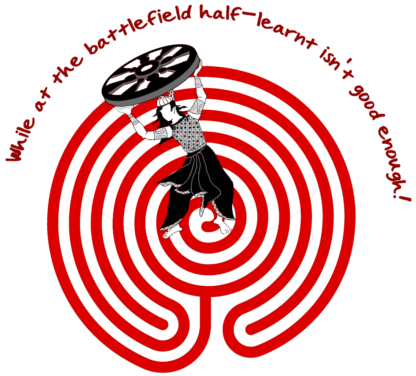Our Teaching Philosophy
We at 2IIM follow some simple guidelines in our course structure for CAT.

We start from scratch (and then increase difficulty level slowly): The first few questions are beguilingly simple. The plan is to provide a framework for students to handle tougher questions. The most instructive way to learn is by discovering ideas. Every chapter is broken into theory, exercise and CAT-level questions. The idea is to provide a framework with simple questions and 'push' students to discover some thought processes while handling CAT-level questions. Stay away from get-high-scores-quickly schemes: We have consciously stayed away from short-cuts and other over-simplifications to ensure a stubborn focus on fundamentals. Many guys who crack CAT will tell you that the exam is about speed and good time management. They are correct. However, the 'speed' that they refer to is the ease with which you can zone in on the best method for a particular question, not necessarily the speed at which you can plug in a shortcut. If you 'pick' the best method as soon as you read the question, you'll be able to approach all questions with time to spare. Focus on building the thought process, and less on getting answers: Let me illustrate with a simple example. There is a rule that goes like this - For a prime p greater than 3, p2 - 1 is always a multiple of 24. Many CAT aspirants might have seen this rule, but few might know the basis behind this rule. p2 - 1 = (p - 1) (p + 1). Now, if p is a prime > 3, p is odd. P - 1 and p + 1 are consecutive even numbers, which implies one of them will be a multiple of 4 and the other a multiple of 2. Or, (p - 1) (p + 1) will be a multiple of 8. Now, p - 1, p, p + 1 are three consecutive integers, implying that one of these has to be a multiple of 3. p is prime; so one of p - 1 or p + 1 has to be a multiple of 3. This is why, p2 - 1 is a multiple of 24. If you have gone through this process and you see the next rule to be - If p is a prime > 3, p has to be of the form 6k + 1(where k is a natural number), it becomes far easier to establish. The course is built on the premise that it is the ability to figure out newer frameworks that distinguishes the best from the merely good, not a vast knowledge base that comprises many frameworks. The course material is designed to build the thought process. Assess where you stand every now and then: Each class ends with a set of Prep Edge questions that acts as a benchmark for students. We have taken enormous effort to ensure that CAT-level questions fall by and large into the band of difficulty that one is likely to encounter in the exam. If a student can confidently approach 80% of the questions in this category, he/she can be confident that this particular topic has been well covered. Prepare with intensity, but enjoy the process: CAT tests intensity and stamina as much as it does application. Completing a 170-minute exam without concentration 'drops' is not easy. Contrary to popular perception, this is not an exam that one should prepare for eight hours a day. If you can do two hours a day with intensity, you will be in great shape for the exam. Focus on intensity, not time. Intensity can be built up without a feeling of being burdened by it only if you enjoy this process at some level. We have tried our best to make sure classes are as interesting as possible.
What does the course provide?
All sections covered in CAT are covered in detail. There are more than 60 classroom sheets that get discussed completely in class. Apart from this, there are ten books, 8 paper-based mock CATs and 12 online mock CATs, all with detailed explanations and analyses. 2IIM also conducts three full-day workshops on CAT in the 10 weeks prior to CAT. These sessions are handled by Rajesh Balasubramanian and are free for 2IIM students.
What does the course not provide?
We do not provide any guarantees. You are about to take a competitive exam that 200,000 other people are going to take. So, there is no guarantee that you will definitely feature in the top few. If you work diligently and attend most classes, we can guarantee that you will be equipped to handle almost everything that is thrown at you in CAT. We will always be available for discussion, planning, doubt-clarification etc. But as teachers, our job ends with taking the horse to the pond. Kindly keep this in mind and do not believe that your job is done once you enroll for a course. In many ways, your job begins when you enroll for your course.
A Fermat Education Initiative
10-C, Kalinga Colony
Bobbilliraja Salai, K K Nagar
Chennai - 600 078
Phone: +91 44 4505 8484
E-mail: rajesh@2iim.com

